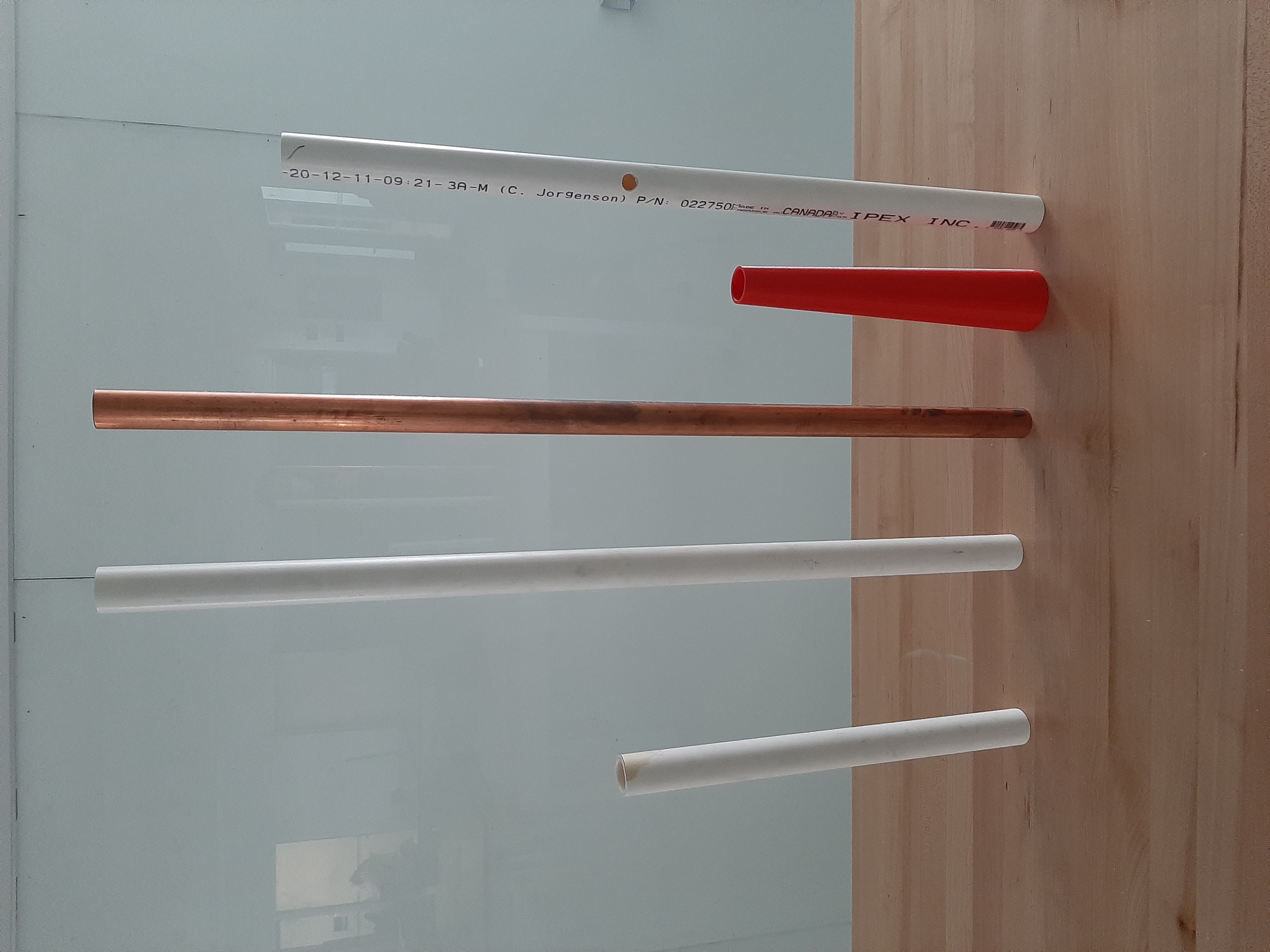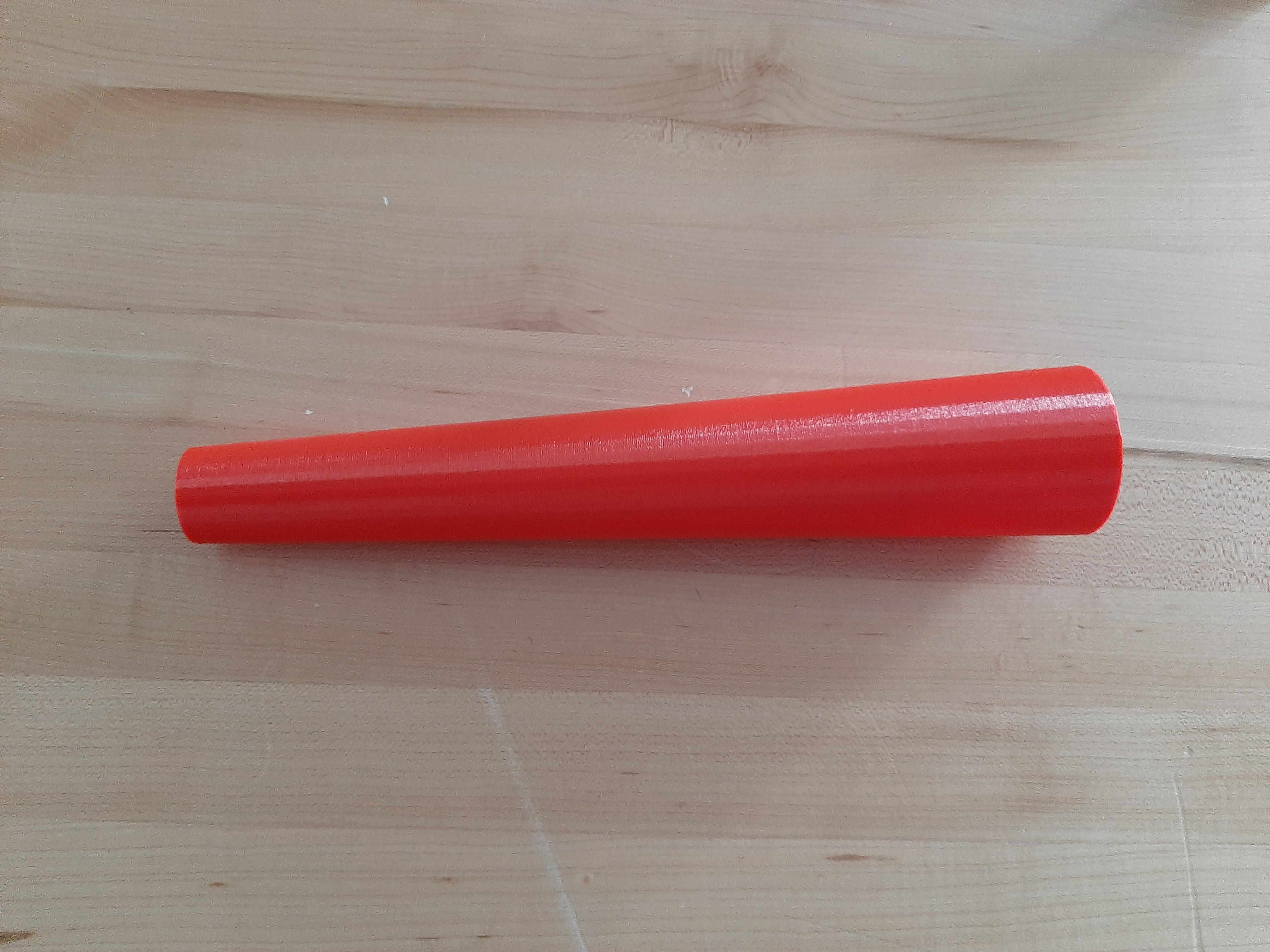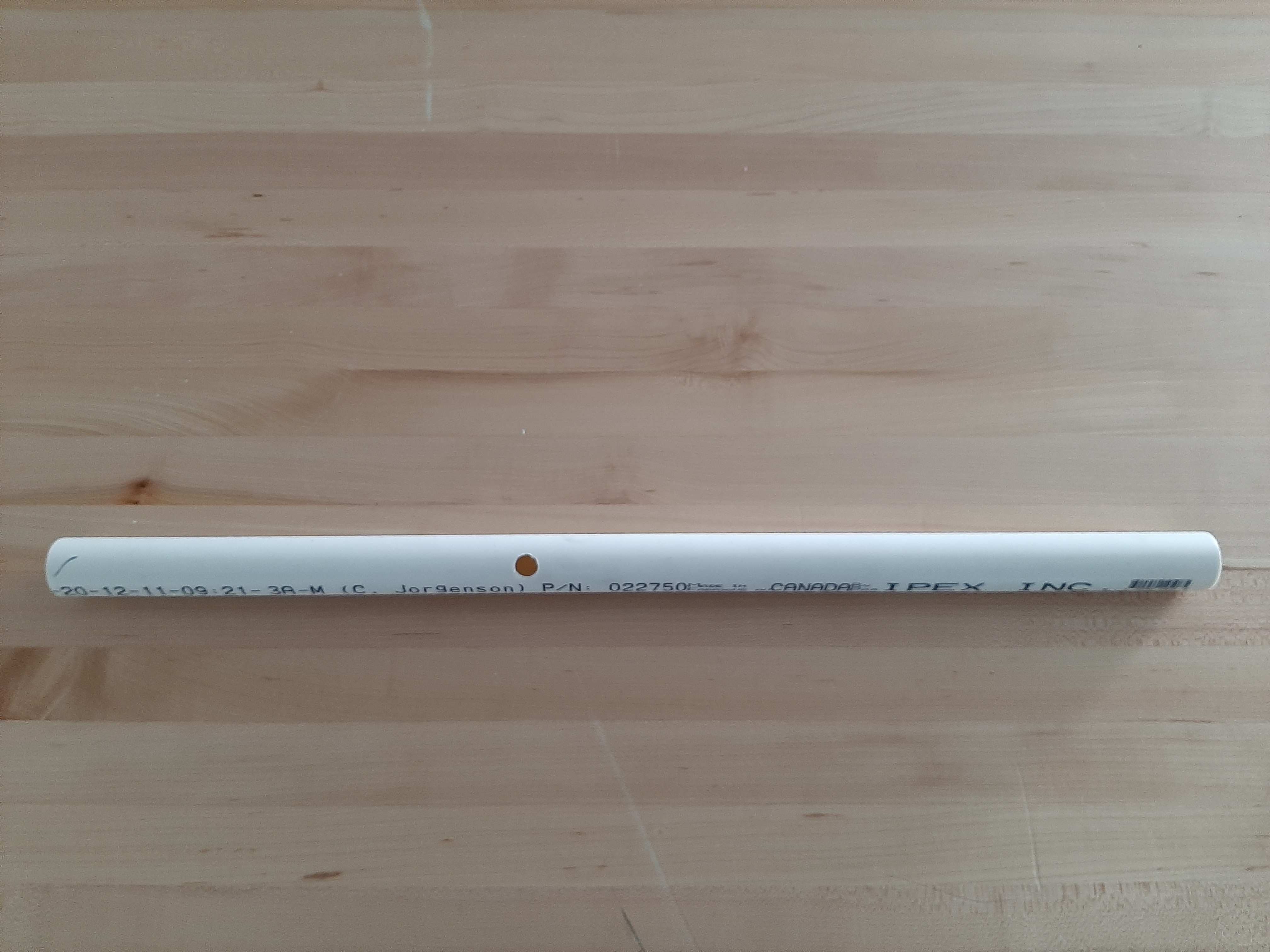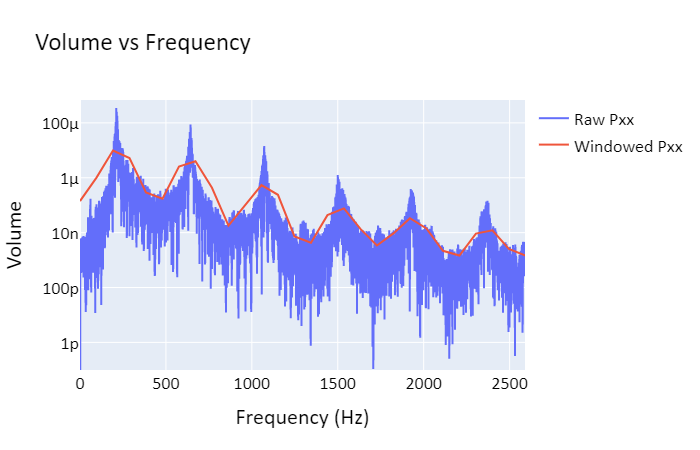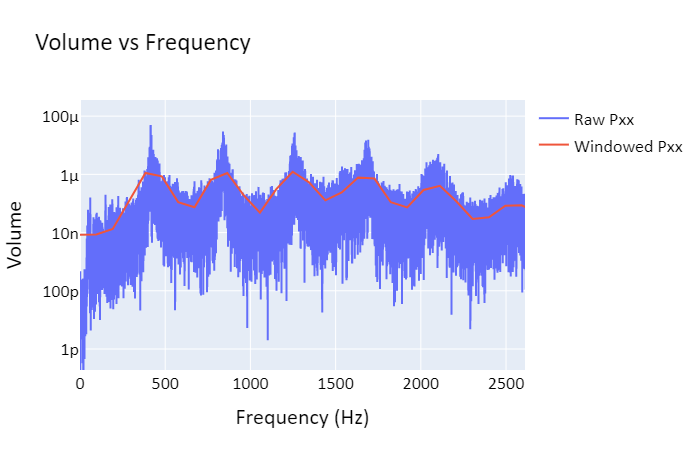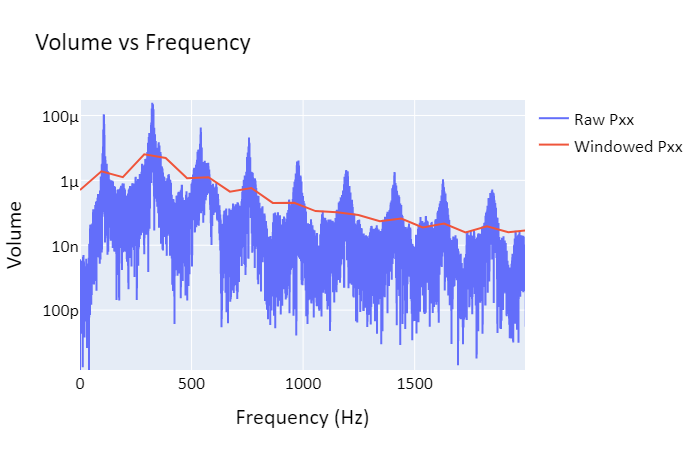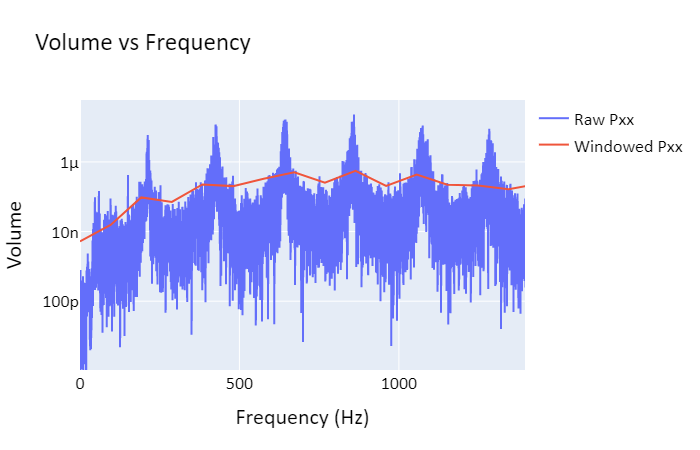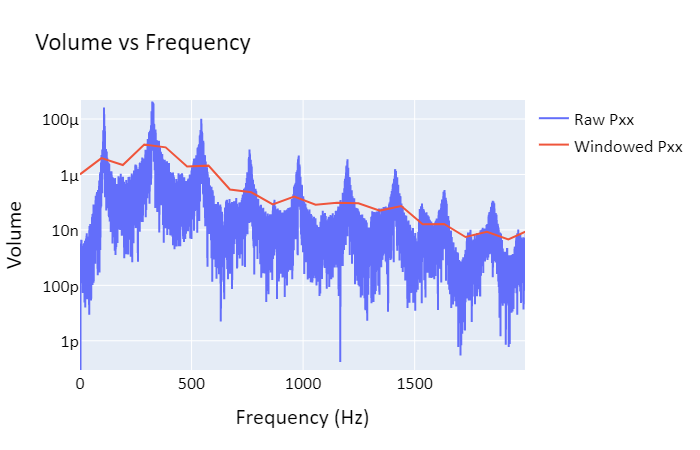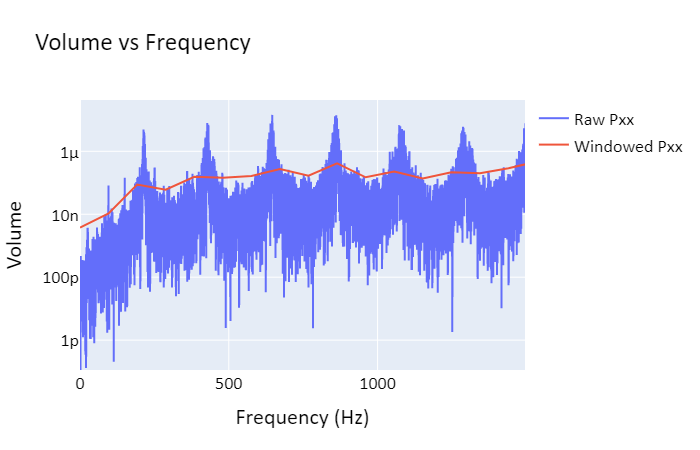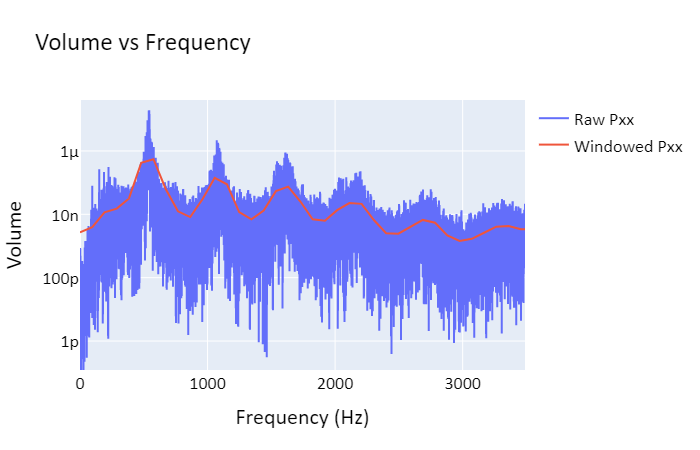Lesson
What is sound? Put simply, sound is a wave of pressure in a medium. When you clap your hands, for example, you create an area of compressed air. The increased pressure between your hands then pushes on the air around your hands, moving the area of high pressure away from the initial clap without actually moving the air away from your hands on average; this front of high pressure is followed by a front of lower pressure, as momemtum pulls some pressure away. If we were to graph this pressure difference against time, we would get a sine function:
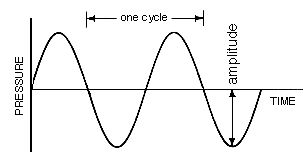
The length of a single cycle in time is called the period "T". Most sounds don't create a single wave front, but many; the rate at which these waves pass is called the frequency "f". If we look at the pressure difference against position instead of time, then the length of a single cycle is the wavelength "λ"; λ is the distance that the wave moves in a single period T. We can relate these quantities together using the speed of sound, which in roughly 343 meters per second:
v=d/t=λ/T=λf
This means that if we know the wavelength of sound wave, then we also know the frequency (so long as the medium is air, and the temperature and humidity are normal for an interior room).
What is resonance? Resonance is the combination of overlapping waves as they are reflected within a medium. When you have a space such as a pipe which reflects sound waves at both ends, the combination of these waves resonates to create standing waves; standing waves with fixed nodes composed of two waves moving in opposite directions:
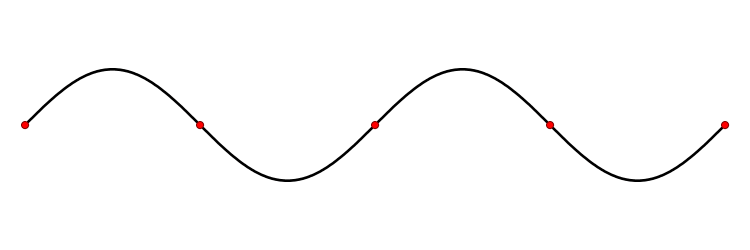
Nodes in a sound wave, seen above as red dots, are places in the wave that are at atmospheric pressure. The points midway between nodes where the wave is at the highest or lowest are called antinodes.
In order to understand how resonance happens in instruments, we need to first understand how sound waves are reflected in instruments. Whenever a sound wave reaches a change of medium, part of the wave continues into the new medium, and part of the wave is reflected back. When is is significantly harder for sound to move through the new medium, most of the wave is reflected, and the phase (positive or negative sign) is reversed:
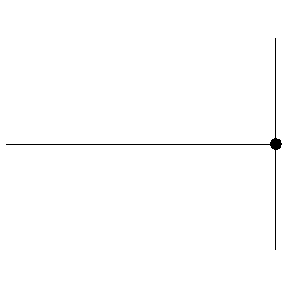
When the wave is not moving into a medium that requires more energy to move through, most of the wave continues, and the smaller reflected waves preserves phase:
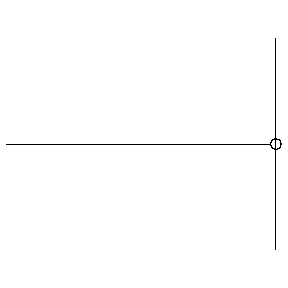
This phase of reflection allows us to predict the wavelength of waves reflected in a pipe. At open ends, which experience the softer phase-preserving reflection, the incoming and reflected waves share a phase, and therefore combine to increase amplitude at the open end. This creates an antinode. At closed ends, which experience the harder phase-reversing reflection, the incoming and reflected waves have opposite phases, and so they cancel out. This creates a node. Therefore, only waves which have antinodes at open ends and nodes at closed ends can resonate in a pipe.
Using this observation, we can find the frequencies of sound that resonate for a given pipe. For a pipe with both ends open, we require an antinode at both ends, so given the sine function shape, the length of the pipe must be a multiple of half the wavelength: length=nλ/2 n=1, 2, 3...
For a pipe with one open end and one closed end, the length of the pipe can be a quarter of the wavelength plus a multiple of half the wavelength; length=nλ/2+λ/4 n=0, 1, 2...
Note that lower frequencies are prefered due to their lower energy. Combining this with the equations above, we find that the main pitch created by an open/open pipe, called the fundamental frequency, is f=v/(2L). For an open/closed pipe, the fundamental frequency is f=v/(4L).
Holes in a pipe function similarly to an open end in creating antinodes; most real wind instruments work either by opening and closing holes to effectively control the length of the instrument (woodwinds), or by opening and closing valves in order to control the length of the instrument (brass). Instruments using open/open end resonance include the flute and certain pipe organs, while open/closed end resonance is used in instruments such as clarinets and trumpets. This distinction between open and closed resonance explains why clarinets are lower in pitch than flutes despite having similar lengths.
Here are the slides used in the classroom presentation of the demonstration:




